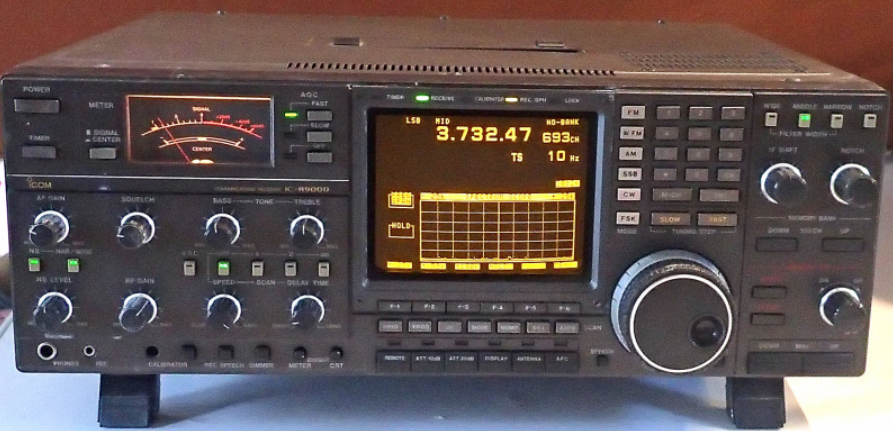The Icom R9000 is a high-end communications receiver known for its exceptional performance and wide range of features. Here are some key details about the Icom R9000:

Frequency Range
The R9000 covers a broad frequency range, typically from 100 kHz to 1999.8 MHz, making it suitable for a wide array of applications, including amateur radio, commercial, and government communications.
Modes of Operation
It supports various modes of operation, including AM, FM, WFM (Wideband FM), SSB (Single Side Band), CW (Continuous Wave), and more. This versatility allows it to be used for different types of signal reception.
Display and Controls
The R9000 features a large, easy-to-read display that shows frequency, signal strength, and other relevant information. It also has a comprehensive set of controls and buttons for easy operation and quick access to its functions.

Sensitivity and Selectivity
Known for its excellent sensitivity and selectivity, the R9000 can pick up weak signals and distinguish between closely spaced signals, which is crucial for clear reception in crowded frequency bands.
Memory Channels
It typically includes a significant number of memory channels, allowing users to store and quickly access frequently used frequencies.
Build Quality:
The R9000 is built with high-quality components and a robust casing, making it durable and reliable for both amateur and professional use.
Additional Features
It may include features like a built-in spectrum display, notch filter, automatic gain control (AGC), and noise blanker, which enhance its performance in various signal environments.
Applications
Due to its wide frequency range and advanced features, the R9000 is suitable for a variety of applications, including monitoring commercial radio traffic, airband, maritime communications, amateur radio frequencies, and even signals from satellites.
Connectivity
The receiver typically offers various connectivity options, including antenna inputs for different frequency ranges and outputs for recording or processing the received audio.
Power Requirements
It is designed for stationary use and usually requires an external power source, such as a mains adapter.

![]() Icom R9000
Icom R9000 




